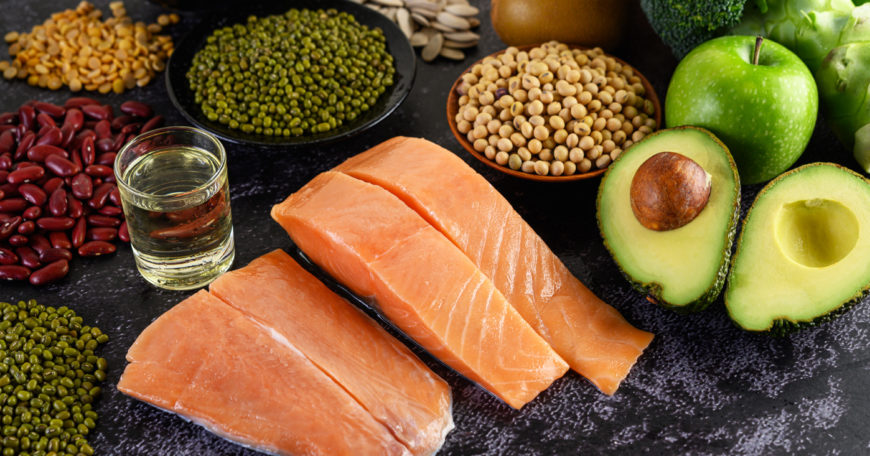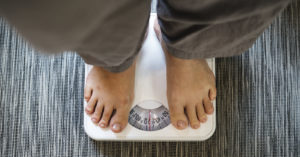Your Stats:
Your BMR is:
Your TDEE is:
(4 calories per gram)
(9 calories per gram)
(4 calories per gram)
| CARBS | PROTEIN | FAT | FIBER | CALORIES | |
| GRAMS per day | 280.3 | 0 | 0 | 0 - 0 | 1121 |
| GRAMS per meal | 93.4 | 0 | 0 | 0 - 0 | 374 |
Your Comprehensive Guide To Calculating Your Macronutrients
Regardless of the fitness goal you have (e.g., losing weight, gaining muscles, changing workout routine), calculating your calories and macronutrients is essential.
The body needs energy and gets it from the food you consume; consequently, adjusting the ratio of these foods can either accelerate or slow down the goal you’re trying to achieve.
For this reason, many fitness gurus and health experts are emphasizing the vitality of calculating your macros to manipulate the ratio for optimal results.
How does our calculator work?
Our macronutrient calculator utilizes multiple equations and formulas according to credible nutrition and fitness guidelines to measure several parameters (e.g., TDEE, BMR).
By estimating your TDEE and BMR, our macronutrient calculator provides you with solid information about the number of calories and macros you should be eating to reach your goal in as little time as possible.
Your basal metabolic rate (BMR)
The basal metabolic rate, or BMR, is a nutritional parameter that the calculator uses to estimate your TDEE.
This number is subject to numerous anatomical and physiological variables, including your age, gender, weight, height, body composition (e.g., lean muscle mass, body fat percentage), degree of physical activity, and diet.
BMR refers to the number of calories your organs and cells consume without having to perform any physical task. In other words, it is the energy required by the body to keep the organs functioning.
Your total daily energy expenditure (TDEE)
While BMR is an essential parameter to account for, calculating the additional calories your body needs is even more important.
During the day, you are quite physically active, producing constant cycles of muscular contraction-relaxation. You go to work, walk around the house, exercise (maybe?), and more.
These activities all contribute to your TDEE, which makes it a crucial factor to take into consideration when trying to lose weight or gain muscle.
Our macronutrient calculator uses the information you provide about the degree of physical activity you get (e.g., sedentary, light activity, moderate activity, intense activity), as well as whether you exercise or not to calculate your TDEE.
This number will be useful in estimating your macros.
Your macros
According to credible scientific sources, the minimum amounts of macros that allow you to gain more muscle mass or at the very least maintain the lean mass you already have include:
- Protein – 1 gram per pound of bodyweight (2.2 grams per kilogram of bodyweight)
- Lipids (i.e., fats) – 0.3 grams per pound of bodyweight (0.66 grams per kilogram of bodyweight)
- Carbohydrates (i.e., sugars) – the rest of the calories
Protein
In several studies conducted by the American Dietetic Association, Dietitians of Canada, and the American College of Sports Medicine, researchers found that a minimum of 0.7 grams of protein per pound of bodyweight is the recommended amount to gain lean muscle mass and lose fat.
With that being said, most athletes aim for 1 gram per pound for calculation purposes. Moreover, this estimation carries no adverse effects and allows for a larger margin of error, which is why we use it in our macronutrient calculator.
Note that professional athletes with more muscle mass may need to consume more protein to maintain their body composition.
According to some research, this entails taking up to 1.4 grams of protein per pound of bodyweight.
Lipids
Despite the bad reputation that surrounds lipids, they are crucial compounds to ensure normal cellular function and brain activity.
Consuming 0.3 grams of fat per pound of bodyweight supplies your body with sufficient amounts of fatty acids to ensure a myriad of biochemical reactions.
Carbohydrates
When you reach the minimum intake of protein and lipids, the rest of your calories and macros should come from sugar.
Of course, carb intake will comprise the majority of your daily calories, as it’s the primary fuel source used by all cells.
The major macronutrients in the body
Macronutrients refer to biochemical compounds that provide the body with energy and mediate multiple physiological and structural functions (e.g., building cells, producing energy).
There are three macronutrients that you should be aware of:
- Protein
- Carbohydrates
- Lipids
Protein
Protein interferes in endless reactions to build up tissues (e.g., muscle).
The Food and Drug Administration (FDA) recommends that people consume at least 50 grams of protein per day to maintain their lean muscle mass and reduce the rate of fat deposition.
As for athletes, minimal intake should be calculated as a parameter of bodyweight since lean muscle mass could be significantly higher than regular individuals.
For this reason, sticking to at least 0.7 grams of protein per pound of bodyweight is reasonable.
Another caveat of consuming protein hides within its high thermic effect, which means that your gastrointestinal tract will need more energy to break it down.
In one study, researchers found that 20-30% of all the calories residing in protein get burned during its digestion. This is significantly higher than the 5-10% required for sugar and the 0-3% required for fat.
According to another study, scientists concluded that the high thermic effect of protein and its satiety-inducing properties can lead to substantial weight loss even in the absence of physical activity.
One gram of protein has 4 calories.
Carbohydrates
Carbohydrates are the primary source of energy used by the body to produce Adenosine Tri-Phosphate (ATP), which is necessary for all biochemical reactions.
These molecules come in simple (e.g., glucose, maltose) and complex (e.g., starch, fiber) forms that have different glycemic indexes and digestive properties.
The only situation where the body burns another macro to produce energy is when you’re on the ketogenic diet, which forces the liver to burn fatty acids in order to synthesize ketone bodies that get burned for energy purposes.
Fiber is especially beneficial for people since it’s indigestible, meaning it will remain in the intestines until excreted with bowel movements.
Consequently, you will deal with less gastrointestinal symptoms (e.g., constipation, diarrhea), low-grade inflammation, and high cholesterol levels.
Fiber also helps restore the balance to your gut microbiome, which proved to be extremely beneficial to human health.
Finally, the low glycemic index (how fast your blood sugar rises after consuming carbs) reduces the risk of type 2 diabetes, energy depletion, and other unnecessary complications.
One gram of carbs has 4 calories.
Lipids
Interestingly, 1 gram of lipids contains more energy potential than 1 gram protein and 1 gram carbs combined. As a result, consuming more fat than you’re supposed to might lead to substantial weight gain.
With that out of the way, not all fat is equal; consuming a variety of fatty acids (e.g., polyunsaturated fatty acids, monounsaturated fatty acids) is integral to keep your body functioning at an optimal rate.
Furthermore, fat is vital for the absorption of certain vitamins known as lipophilic vitamins (e.g., vitamins A, K, E, D).
Perhaps the most commonly discussed fatty acid is omega-3, which is a type of polyunsaturated fatty acids that provides the body with many health benefits.
One gram of lipids has 9 calories.
How to track your macro intake
Tracking your macro intake is crucial to accelerate the journey toward your fitness goals.
Here are a few ways you can accomplish that:
Apps
Using apps such as Calorie King is quite useful in providing information about the number of calories contained in a certain food.
To use this information for macro tracking, you can utilize other apps (e.g., My Macros) as a daily food journal in which you can add the food you are eating. Subsequently, the app provides you with a breakdown of your daily macros.
The best thing about these apps is their data saving services, meaning that you don’t have to manually input the foods that are already in your library. In other words, after using the app for some time, a few clicks would suffice to give you a comprehensive report.
Scale your foods
This technique is simple but very effective.
By scaling the foods you buy from the grocery store, you could potentially create a comprehensive table of all the macros you’re consuming.
At first, this could be overwhelming; however, practice will allow you to estimate the difference in calories between certain foods (e.g., apples, bananas, strawberries), which makes your life much easier.
The Hand method
If you don’t want to invest too much time in tracking your macros, you can opt for this method to estimate the appropriate portions.
Here’s how it goes:
- Your palm determines protein portions.
- Your thumb determines fat portions.
- Your cupped hand determines carb portions.
In simpler terms, if your plat has a protein source that’s close to the size of your palm, it is the right portion.
Unfortunately, this method lacks the flexibility of other macro tracking techniques.
While macro tracking may require some effort at the beginning, it is still worth it. This way allows you to take the fastest route to your fitness goals.
Many people complain about the constant obsession of what to eat and how to meet the recommended macronutrient ratio; however, doing this for a few weeks will result in impressive outcomes that will motivate you to move forward.
The difference between macronutrients and micronutrients
Since the terminology of macros and micros can be quite confusing, let’s quickly define both categories:
Macronutrients
This usually refers to protein, carbs, and lipids, which get used for energy purposes and as structural building blocks.
Micronutrients
While a full consensus on what belongs to this category is still a topic of debate, vitamins (e.g., vitamin C, D, B-vitamins) and minerals (e.g., iron, zinc, copper) are considered micronutrients.
Despite how straightforward the two definitions might seem, some experts advocate for integrating calcium, magnesium, and sodium as part of the macronutrient category since we consume them in large quantities.
With that being said, the United Nations Food and Agriculture Organization classifies these minerals as macrominerals.
It goes without saying that micronutrients play a vital role in all physiological functions, which is why you should aim to get your macros from whole foods, as they generally contain sufficient amounts of micros.
Macronutrients for weight loss
Macro tracking is essential in accelerating the process of weight loss.
By monitoring the sources of your caloric intake, you’ll push your liver into working more efficiently in burning fatty acids and synthesizing protein.
In general, you can expect to lose 1-2 pounds per week. Going overboard with this could predispose you to several medical conditions, such as gallstones, lethargy (i.e., generalized fatigue), and migraine headaches.
Note that you need to achieve a deficit of 3,500 calories in order to lose one pound of fat. A simple way to reach this number if by lowering your daily caloric intake by 500 calories per day.
Macronutrients for bulking
As opposed to weight loss, bulking requires higher caloric intake combined with regular strength training and physical activity.
For reference, consuming an additional 100-200 calories over your TDEE helps you gain 0.5 pounds of lean muscle mass per week.
This rule is subject to other factors such as bodyweight. According to Dr. Eric Trexler, people should work to gain 0.25-0.5% of their bodyweight in lean muscle mass per week.
However, and safety’s safe, you may want to start with 0.25% at first.
A word about carb cycling
Carb cycling refers to adjusting the amounts of sugar you consume on a daily (or weekly) basis to prevent the slowdown of BMR.
This technique could assist you in losing fat, gaining weight, or maintaining lean muscle mass.
To learn everything there is to know about carbohydrate cycling, check out this page.
Where to get your macros?
Sources of protein
People generally associate protein with red meat as it’s been historically labeled as the most protein-dense food. However, you can opt for other options, such as:
- Lean Beef
- Chicken
- Tempeh
- Egg Whites
- Walnuts
- Lean pork
- Fish
- Firm Tofu
Sources of fat
Here is a variety of choices where you could get healthy fatty acids:
- Nuts
- Coconut
- Olives
- Chocolate
- Oils
- Butter
- Avocado
- Steak and rice
Sources of carbs
Aside from carbohydrates, the following list of foods also contains micronutrients:
- Fruits (e.g., apples, bananas, strawberries)
- Rice
- Popcorn
- Pasta
- Quinoa
- Bread
- Starchy vegetables (e.g., potatoes)
- Legumes
Sources of protein and carbs
Foods that contain protein and carbs are especially great for people who are bulking.
This list consists of foods that contain 1 gram of protein for every 2-4 grams of carbs:
- Beans
- Sprouted grains
- Peas
- Oatmeal
- Bread
- Salmon
- Skim milk
Sources of protein and lipids
This combination provides the longest satiety feelings, which helps people who want to lose weight:
- Whole eggs
- Whole yogurt
- Chia seeds
- Cheese
- Most beef
- Bacon
- Salmon
Sources of carbs and lipids
This combination is the least recommended due to the high number of calories and the relative absence of any protein.
You should only eat these foods when trying to reach your daily carbohydrate intake:
- Cookies
- Ice Cream
- Granola
- Cake
- Donuts
- Fries
Takeaway message
Macro tracking should be part of every aspiring athlete (e.g., mixed martial artists) who wants to optimize his/her health and body composition to excel in their professional lives.
If you’re into MMA, don’t hesitate to check out this link (insert link) for news, methods, and everything related.
However, this method provides the same benefits (if not more) for regular people who just want to lose weight or gain muscle mass.
To calculate your macros with extremely high accuracy and reliability, you can use our macro calculator on top of this page.







